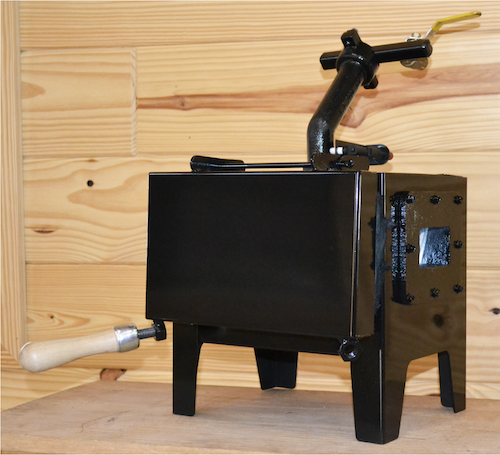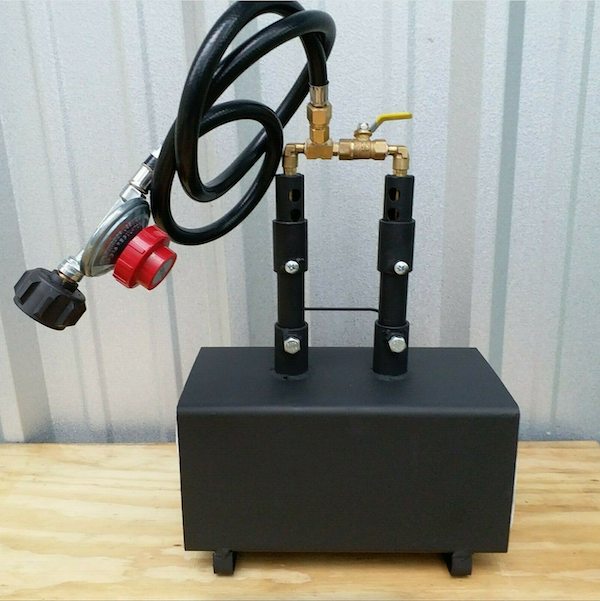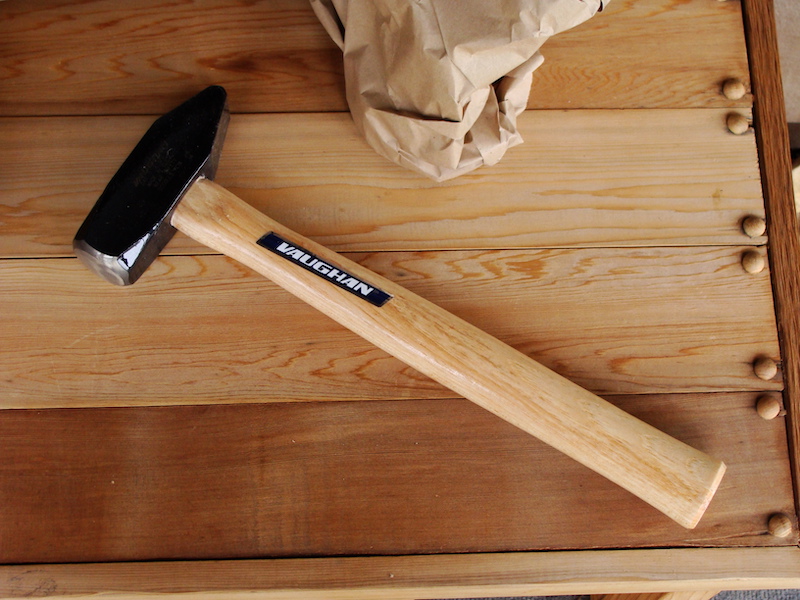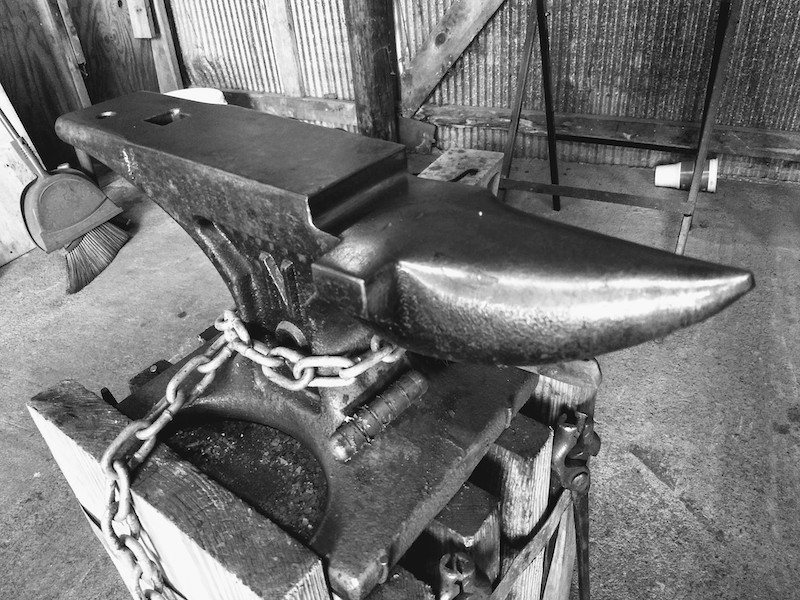Looking for a blacksmith starter kit with exactly what you need and nothing you don’t?
You’re in luck!
I talk about the basics of blacksmithing every week in class at Brown County Forge.
We go over skills and techniques, but spend real time talking about essential equipment. That’s what we’ll cover in this post and where to buy it.
For your own kit, you have two great options:
- Option 1: Work with us to configure a kit that works best for you. Get your new blacksmith starter kit shipped directly to you. Pricing includes name brand equipment and material to get started. We take care of all the details so you can start forging faster.
- Option 2: Go the DIY route and use the resources below to build your own.
OPTION 1: Have Your Blacksmith Starter Kit Shipped to You

The starter kits we provide include:
- Single or Double Burner Gas Forge – A single burner option pictured above from NC Tool Company. Other options include Atlas Forge’s single burner forges and Forgemaster forges.
- 69 lb. – 150 lb. Anvil – Happy to discuss pricing on sizes and different brands. Atlas, NC Tool Company, Texas Farrier Supply, and more.
- 2 – 3 pound Cross Peen Blacksmith’s Hammer
- Wolf Jaw Tongs
- Access to Professional Blacksmiths for help with questions and tips.
- Optional: Safety glasses, hearing protection, aprons, steel bar stock.
Contact us to discuss your kit and pricing!
Email: browncountyforge@gmail.com
Option 2: The DIY Option
The equipment you need to get started blacksmithing comes down to 4 items:
- Forge – How you heat the metal.
- Anvil – Where you shape the metal.
- Hammer – What you shape the metal with.
- Tongs – How you hold the metal.
How Much Should a Kit Cost?
Let’s break down the items in the DIY blacksmith starter kit by price.
Forge – From $160.50 (free shipping) to $375 (plus shipping)

Your forge will be one of the most expensive pieces to buy.
The forge I use is the Knifemaker Economy forge by Majestic Forge (seen above).
It costs $375 (the price recently went up $50) and ships for around $50 depending on how far you live from Sugar Grove, Ohio.
Why I like it:
- Two burners – It gets up to heat quickly.
- Compact – It doesn’t take up a lot of space.
- Easy to set up – Takes about 10 minutes right out of the package.
- Ships fast – I ordered it on a Tuesday and had it 2-3 days later.
A second, less expensive option is this Double Burner from Laredo Blacksmiths:
- 2 Burners
- $160.50 (price recently reduced by $23) with Free U.S. shipping
- Compact size for easy setup and storage.
- See more details, testimonials, and reviews on eBay
- As an eBay Partner, I may be compensated if you make a purchase through the above link.
Anvil – $345 – $450+ (varies by retailer)

The anvil I use in the shop is a 70 pound NC Tool Company brand anvil.
I own two of them and they’re each responsible for thousands of projects.
Why I like them:
- Movable – You can move one of them on your own. No need to call a friend.
- Inexpensive – At under $350 or $5 per pound, it’s a great deal.
- Durable – Mine have seen heavy student use over the years.
Hammer – $28 – $35
Your hammer really doesn’t need to cost a whole lot.
If you find a hammer that weighs between 2 and 3 pounds at a flea market or yard sale for a dollar, buy it.
Your main concern is overall weight and then handle length preference.
For my money, and the hammer I use every day, I go with a 2.5-pound Vaughan Cross Peen. I bought the one you see above on Amazon for $28 in 2011.
I could lose all of my other equipment, but if I lost that hammer I’d be very sad.
Tongs – $40.50
I use Centaur Forge’s 3/8-inch V-Bit Bolt Tongs nearly every day.
They’re good all around tongs useful for flat stock, square bar, and round bar.
Total Kit Cost (before shipping): $574 – $984.94
Where to Buy Each Item
Your Laredo Blacksmiths forge can be securely purchased on eBay through the photo and link above.
For the Majestic Forge double burner forge I use professionaly, go to: majesticforge.com.
For a great single burner I use at home, go to Atlas Knife and Tool: atlasknife.com
Your anvil should be purchased from Centaur Forge to get the best price on shipping – centaurforge.com.
The hammer can be picked up at these blacksmith suppliers:
Your tongs will come straight from Centaur Forge as well – centaurforge.com.
Want to Learn How to Use It All?
I’m happy to answer any questions you might have: browncountyforge@gmail.com
Cheers!
Terran Marks – owner, Brown County Forge




